Olympics: Final Elements
Release Date: February 8, 2002
| Salt Lake City, UT: Rice-Eccles Olympic Stadium (spin, with night lights) | |
|---|---|
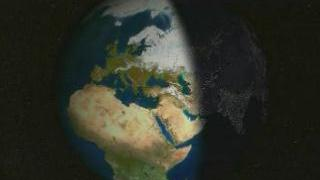
Zoom in |
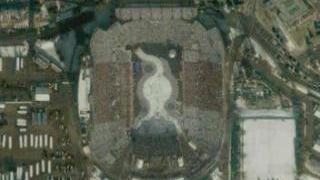
Zoom out |
| Salt Lake City, UT: Rice-Eccles Olympic Stadium (spin) | |

Zoom in |
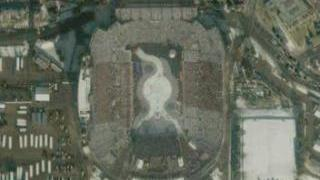
Zoom out |
| Salt Lake City, UT: Rice-Eccles Olympic Stadium (straight down) | |
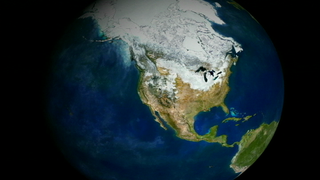
Zoom in |

Zoom out |
SALT LAKE CITY LIGHTS UP THE NIGHT
Tickets may already be gone, but thanks to NASA there's still one way you can drop in on the opening and closing ceremonies for the Salt Lake City Olympics. By carefully fusing image data from NASA's Terra and Landsat spacecraft, as well as the commercial Ikonos satellite belonging to Space Imaging, the space agency brings you this remarkable view of the Rice-Eccles Olympic Stadium as captured from space. The scene is also something of a celebration for the space agency; 2002 marks the thirtieth anniversary of the highly successful Landsat program.
Located on the University of Utah campus, Rice-Eccles is the place for one of the world's biggest celebrations this year. Nearly 45,000 people will pack the stands there, while several billion people around the world will catch all or part of the festivities on television.
One of the remarkable aspects of the zoom into Rice-Eccles Olympic Stadium is the way the rest of the planet looks prior our decent from orbit. As the Earth turns, we see the dividing line between day and night, an imaginary line called the terminator. As the terminator sends part of the planet into shadow for the night, we see lights from cities shining like candles in the darkness below. The development of this zoom and ones like it has roots in important scientific research. The computer science expertise necessary to assemble the scene demands world-class custom software, powerful hardware, and a lot of know-how.
Landsat, Terra, and the computing staff who made this stunning collection of Olympic images possible receive support from the Earth Science Enterprise, NASA's branch committed to ongoing research about the only planet in the solar system that we call home.
Want to see more? Click here to visit our special web page showcasing images from some of NASA's most successful remote sensing projects. There you can see how an integrated team of scientists and computing experts developed these zooms to Olympic venues and much, much more! NASA is committed to the long-term study of the Earth via remote sensing, the study of the Earth from a distance. NASA's Earth Science Enterprise is dedicated to understanding the total Earth system and the effects of natural and human-induced changes on the global environment.
The Olympic zooms, virtual tours, and related images, were created and assembled by the Scientific Visualization Studio at NASA's Goddard Space Flight Center.
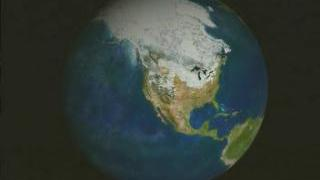
Zoom into Salt Lake City, UT: Delta Center |
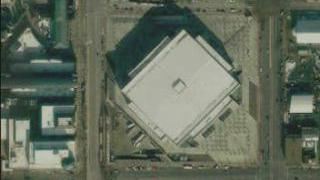
Zoom out of Salt Lake City, UT: Delta Center |
THE HOTTEST ICE IN WEST
The facility is called The Delta Center, but for the 2002 Winter Games it will be known as the Salt Lake Ice Center. Either way, with world class figure skating, ice dancing, and short track speed skating, for 17 olympic days this will be the hottest sheet of ice in the world. When not playing host to Olympians, The Salt Lake Ice Center can be converted into a facility for multiple purposes, from concerts to conventions. In its configuration for the 2002 games it will seat 15,600 spectators.
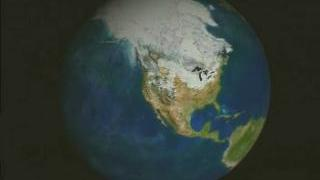
Zoom into Snow Basin, UT |
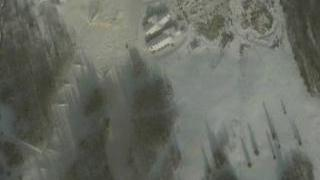
Zoom out of Snow Basin, UT |
PLUNGING THROUGH SPACE TO A DOWNHILL RACE
In many ways, these zooms describe the experience of many who will be competing in the games. Take the skiers who will compete at the Snow Basin Ski Area, the next location we see as we fly in from space. This is the site of the Downhill, Slalom, and Super G events, high speed races that take competitors from lofty heights and challenge them to reach a point far below in as little time as possible.
Located in the Wasatch-Cache National Forest, the Snowbasin Ski Area is about 33 miles (53 km) away from downtown Salt Lake City.
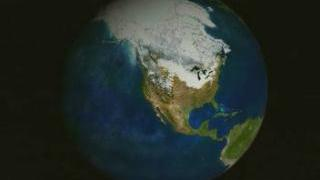
Zoom into Park City, UT |
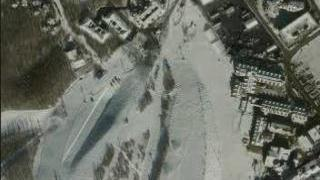
Zoom out of Park City, UT |
HALF PIPE, ALL FUN
Risk. Verve. Calculation. Training. (And you thought we were talking about NASA's Earth Science Enterprise, the space agency's dedicated program for studying our home planet.)
Nope. We're zooming in to the park City Mountain Resort, site of the Snowboarding and Giant Slalom competition at this year's Olympics. Located about 34 miles (54km) east of Salt Lake City, Park City Mountain Resort gets into some thin air, with a summit altitude of more than 10,000 feet.